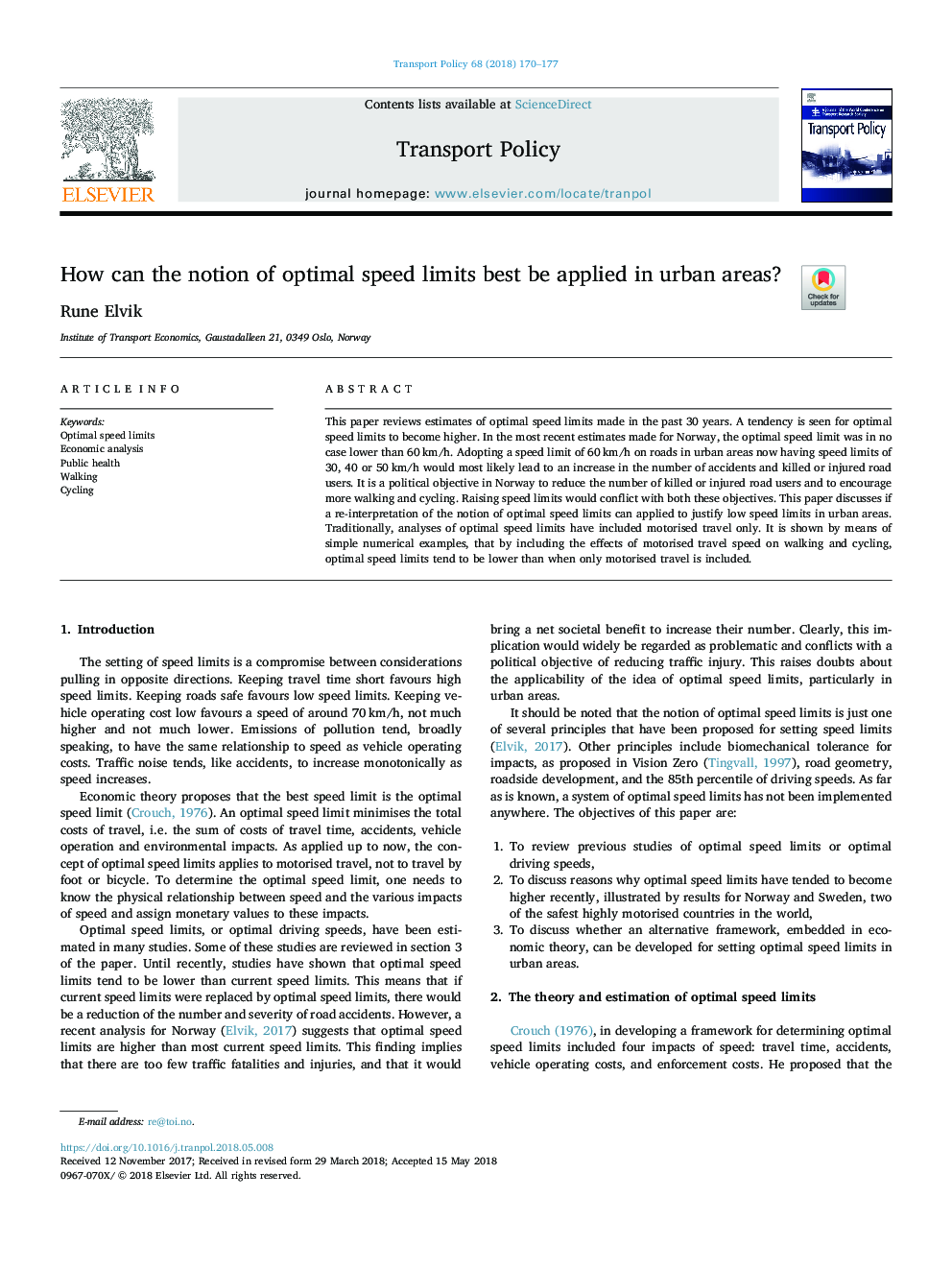| Article ID | Journal | Published Year | Pages | File Type |
|---|---|---|---|---|
| 7496945 | Transport Policy | 2018 | 8 Pages |
Abstract
This paper reviews estimates of optimal speed limits made in the past 30 years. A tendency is seen for optimal speed limits to become higher. In the most recent estimates made for Norway, the optimal speed limit was in no case lower than 60â¯km/h. Adopting a speed limit of 60â¯km/h on roads in urban areas now having speed limits of 30, 40 or 50â¯km/h would most likely lead to an increase in the number of accidents and killed or injured road users. It is a political objective in Norway to reduce the number of killed or injured road users and to encourage more walking and cycling. Raising speed limits would conflict with both these objectives. This paper discusses if a re-interpretation of the notion of optimal speed limits can applied to justify low speed limits in urban areas. Traditionally, analyses of optimal speed limits have included motorised travel only. It is shown by means of simple numerical examples, that by including the effects of motorised travel speed on walking and cycling, optimal speed limits tend to be lower than when only motorised travel is included.
Related Topics
Social Sciences and Humanities
Social Sciences
Geography, Planning and Development
Authors
Rune Elvik,
